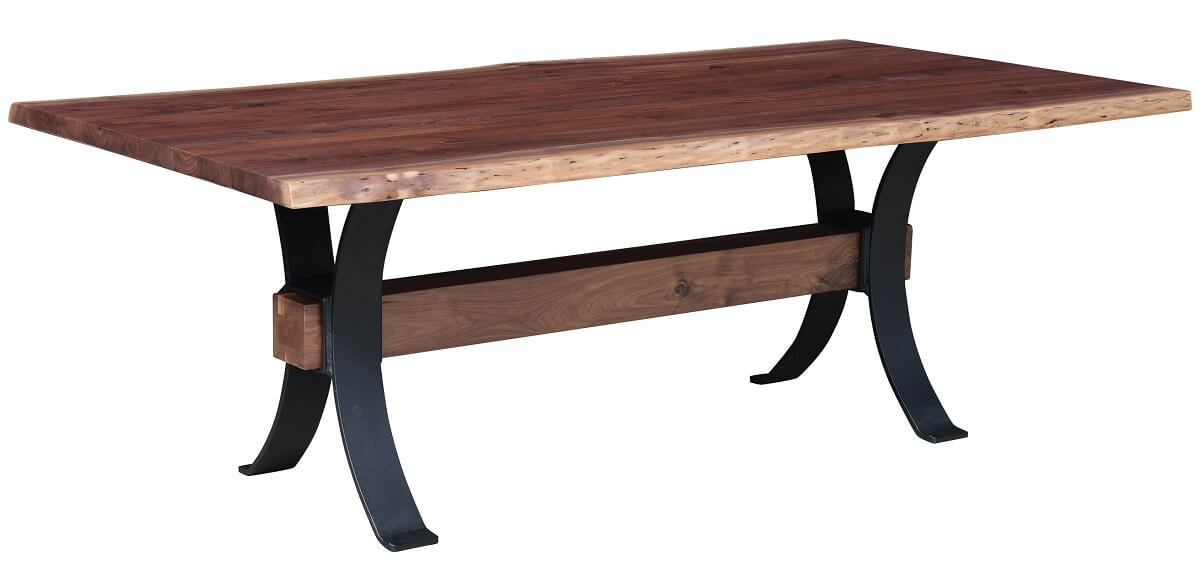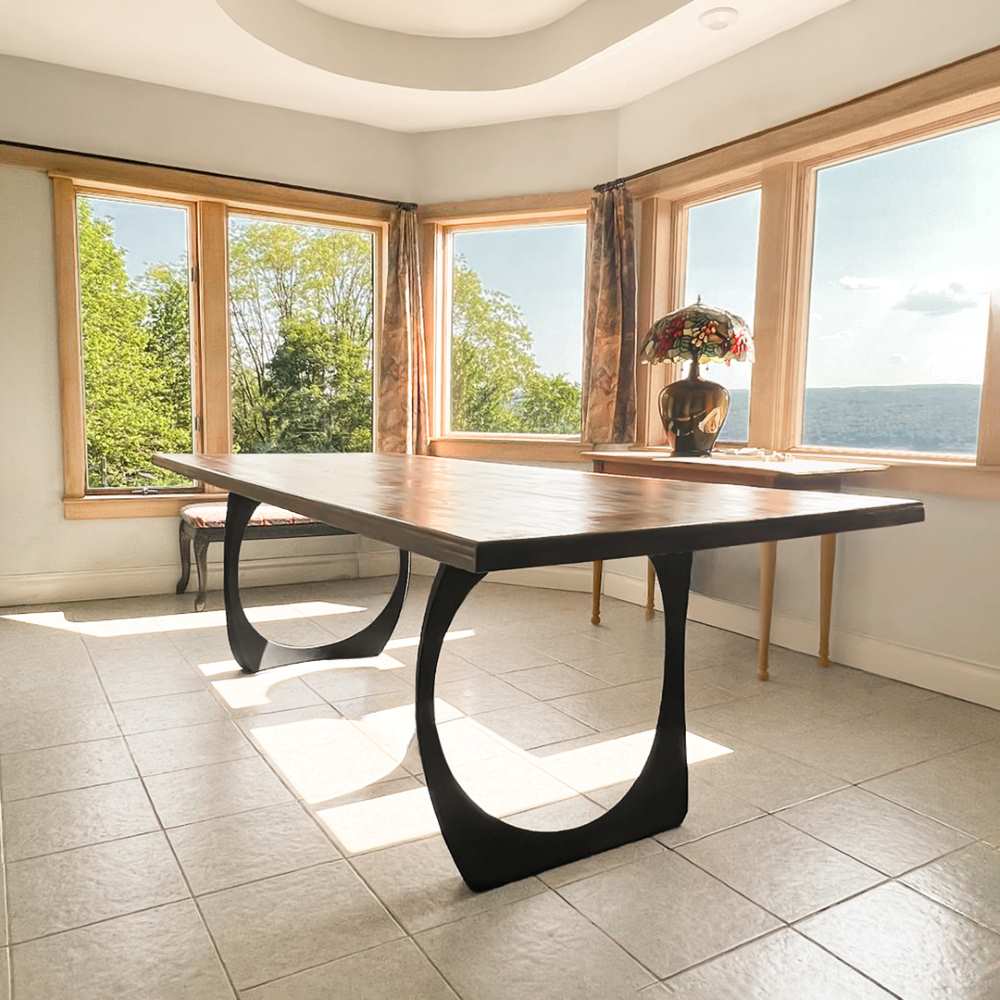Dining Room Table Legs: A Guide to Selecting the Right Style for Your Home
Dining Room Table Legs: A Guide to Selecting the Right Style for Your Home
Blog Article
Just How to Select the Perfect Dining-room Table Legs for Your Home Décor
Picking the perfect dining room table legs is a nuanced procedure that requires cautious factor to consider of various aspects, including your room restraints, aesthetic choices, and useful needs. The interplay in between measurements, materials, and designs can considerably affect the atmosphere of your eating area, making it essential to approach this choice carefully. As you ponder the myriad alternatives offered, it becomes clear that the appropriate selection prolongs beyond plain look; it can enhance your general eating experience. What elements should you prioritize to ensure your selection matches your home's one-of-a-kind personality?
Assess Your Eating Room
Evaluating your eating space is important for selecting the right table legs that enhance both aesthetics and functionality. Begin by measuring the measurements of your dining area, consisting of ceiling height, floor space, and distance to various other furniture. This details will assist identify the ideal size and height of your table, which directly influences the choice of table legs.
Next, take into consideration the style and layout of your dining room. As an example, an open-concept layout might gain from table legs that use visual agility, such as slender steel or acrylic choices. Conversely, a much more conventional setup may ask for sturdy wood legs that supply a sense of permanence.
Assess the existing color scheme and materials in your dining location. Integrating the table legs with these components creates a cohesive appearance that improves the total decor. In addition, think of the performance called for in your room. If you often host huge gatherings, think about legs that provide extra support and security.
Ultimately, an extensive evaluation of your dining area will lead you in making an informed choice, ensuring that your table legs not only boost the aesthetic appeal yet also serve functional functions.
Consider Your Design Preferences
When picking dining room table legs, it is necessary to review your individual style choices, as they substantially affect the general aesthetic of your dining area. Your choice of table legs can either enhance or comparison with existing decoration, making it essential to straighten them with your preferred interior decoration theme.
If your home leans in the direction of a modern-day visual, consider streamlined steel or minimalist wood legs that provide a tidy, minimalist look. For an extra traditional method, luxuriant wooden legs with complex makings can include a touch of style and elegance. Industrial designs gain from durable, raw materials such as reclaimed timber and steel mixes, reflecting a tough charm.
Furthermore, farmhouse and rustic styles commonly prefer tough, beefy legs that stimulate a feeling of heat and comfort. Alternatively, if your design is diverse, you may select unconventional shapes or a mix of materials to create aesthetic rate of interest.

Evaluate Material Options
The selection of material for dining area table legs plays a critical duty in both longevity and visual charm. Common materials include timber, steel, and composite options, each offering distinct features that can influence the total look and longevity of your table.
Timber is a timeless selection, known for its heat and flexibility. Woods like oak and walnut give remarkable strength and can be completed in various stains to match any decor. However, softwoods like ache are much more prone to scrapes and dents, making them much less optimal for high-traffic areas.
Steel legs, frequently crafted from steel or light weight aluminum, exude modernity and industrial charm. They are very resilient and immune to wear, making them ideal for households with children or frequent gatherings (dining room table legs). Additionally, steel can be finished in different shades, improving the customization possibilities
Composite materials, such as MDF or laminate, deal cost and varied styles. While generally less durable than solid timber or steel, they can still offer a stylish appearance and are typically very easy to keep.
Inevitably, the material you pick must straighten with your way of living, visual choices, and the degree of usage your table will experience.
Determine Elevation and Size
Choosing the suitable height and size for your dining-room table is important for both functionality and comfort. The typical height for eating tables usually ranges from 28 to 30 inches, permitting adequate legroom for the majority of people when seated. However, it is essential to think about the measurements of your eating space and the kinds of chairs you intend to make use of.

In addition, take into consideration the percentages of your dining-room. A larger table in a roomy area can produce a grand atmosphere, while a smaller table works well in more intimate settings. Eventually, the right height and size will harmonize with your total decor and boost the eating experience for you and your visitors.
Explore Modification Opportunities

Additionally, the design of the legs can be tailored to fit numerous styles, such as rustic, modern, or commercial. Tapered legs can stimulate a mid-century modern-day feel, while beefy, block-style legs might reverberate with conventional or farmhouse decor.
Home owners can likewise discover shade surfaces, from natural timber stains to Resources repaint, allowing them to match or contrast with the table top and surrounding style.
Additionally, leg height can be adapted to fit certain seating plans or individual choices, boosting both comfort and functionality.
Finally, unique embellishments, such as carvings or decorative brackets, can additionally customize the table legs, making the eating experience not just a dish yet a statement piece in the home. By taking into consideration these modification alternatives, property owners can develop a dining area table that truly shows their individuality.
Verdict
Selecting the optimal dining-room table legs calls for mindful factor to consider of various aspects, consisting of the dimensions of the eating space, design preferences, material longevity, and wanted height. Personalization options better improve the capacity to accomplish a cohesive visual that complements the total decoration. By methodically assessing these aspects, property owners can make sure that the chosen table legs not just satisfy functional needs but also add positively to the eating experience and setting of the home.
Selecting the perfect dining room table legs is a nuanced procedure that needs cautious consideration of different elements, including your space constraints, aesthetic choices, and sensible demands.Analyzing your eating area is important for choosing the right table legs that complement both looks and capability.When figuring out size, measure the location where the table my blog will certainly be put to ensure it fits comfortably, permitting for at the very least 36 inches of clearance around check the table for easy movement. A bigger table in a large area can develop a grand setting, while a smaller table works well in even more intimate settings.Selecting the excellent dining room table legs calls for cautious consideration of numerous aspects, including the measurements of the dining room, design preferences, product durability, and wanted elevation.
Report this page